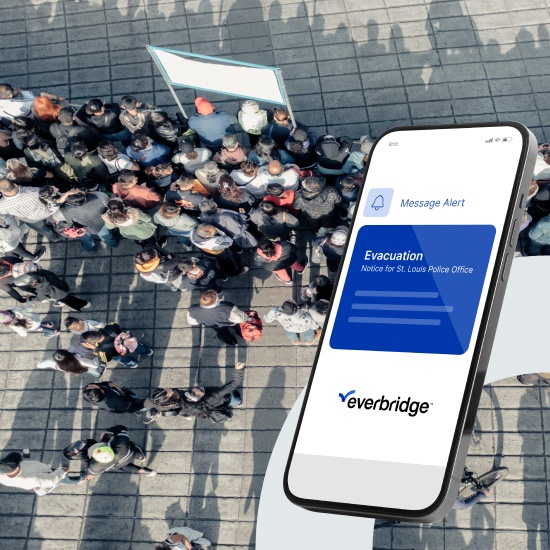In times of civil unrest, organizations face unique challenges in maintaining safety, continuity, and effective communication. Civil unrest can disrupt operations, endanger employees, and damage reputations.
Organizations must have robust crisis communication strategies tailored to these scenarios, emphasizing risk mitigation and escalation protocols.
What is civil unrest?
Civil unrest refers to collective actions such as protests, demonstrations, strikes, or riots that disrupt public order. It’s a state of social disturbance, disorder, or conflict.
Civil unrest can arise due to various factors such as social injustice, economic hardship, political discontent, ethnic or religious tensions, and environmental concerns. These events can escalate rapidly, impacting safety, operations, and reputation.
Recent research found that only 49% of U.S. businesses have a formal crisis communications plan (source). Civil unrest often involves unprecedented situations, demanding adaptive responses, and without a plan in place, responding will be even more challenging.
Effective crisis communication strategies
Here are three strategies your organization can adapt to form a crisis communication plan to prepare for civil unrest.
- Comprehensive crisis communications plan
In times of civil unrest, a well-defined crisis communication plan is essential. This plan should include several key elements to ensure efficient and effective communication during a crisis.
- Clearly defined protocols: establish clear protocols to streamline decision-making and actions. Define who makes public statements and verify information before dissemination.
- Essential contacts: maintain a list of essential contacts, including crisis managers, legal advisors, communications officers, local authorities, emergency services, and media representatives.
- Communication tools: use secure communication platforms, social media channels, and mass notification systems to ensure swift and accurate information dissemination.
- Contact lists: keep a regularly updated contact list of all stakeholders, including employees, customers, suppliers, and media, to facilitate quick communication.
- Escalation procedures: Clearly defined escalation procedures ensure the appropriate response level. Specify criteria for escalating issues to higher authorities or specialized teams.
- Predefined messaging templates: Use predefined messaging templates to communicate consistent and accurate information quickly. Templates should cover safety instructions, status updates, and reassurances.
By incorporating these elements into your crisis communication plan, you can better manage the complexities of civil unrest, ensuring all stakeholders are informed and safe.
2. Communication tools
Invest in reliable communication tools and utilize a range of channels to ensure message cut-through. Tools like:
- Mass Notification: keep people informed as events unfold. Share safety and security tips. Provide support resources.
- Crisis management: mobilize response teams. Execute contingency plans. Keep stakeholders informed.
- Business continuity: future-proof your organization’s resilience with technological support to protect employees, assets, and operations.
- SnapComms: can offer urgent notifications, alerts, surveys, and panic buttons all through one multi-channel internal communication platform.
- Social media, email, intranet, and SMS: Utilize many channels to keep everyone informed. Engage with internal and external audiences through social and web channels.
3. Adaptability and messaging
Adjust communications frequency and tone as events unfold. Maintain informative, objective, transparent, and calm messaging. Address concerns, acknowledge the unrest, and communicate the organization’s position. Share conflict resolution policies, processes, and employee or student assistance programs.
During an emergency, maintain open communication channels and communicate promptly to demonstrate that you are aware of the situation and that you are working with partners to resolve it. Be transparent on timings and the impact of disruptions as the situation unfolds. Engage with the community to support recovery efforts and ensure everyone’s voice is heard. Use community groups to disseminate information.
Emergency management strategies for civil unrest
Below are the key elements of emergency management strategies that will help your organization deal with civil unrest:
- Risk mitigation
- Threat assessment: monitor social media and intelligence sources. Identify potential flashpoints.
- Security measures: secure facilities. Implement access controls. Deploy security personnel. Establish safe areas within facilities for people to assemble or evacuate during times of unrest.
- Escalation protocols
- Early detection: detect signs of escalating unrest (e.g., increased crowd size, aggression).
- Trigger points: define thresholds for escalating communication (e.g., violence, curfew).
- Response levels: graduated responses (e.g., awareness, heightened alert, emergency mode).
- Testing and training
- Drills and simulations: regularly test crisis communication plans. Identify gaps and refine strategies.
- Training: educate staff on protocols. Ensure familiarity with tools.
Organizational resilience in times of crisis
Civil unrest preparedness demands agility, planning, and effective communication. Everbridge empowers organizations to keep people safe and maintain operations during these challenging times. By combining traditional crisis communication strategies with crisis management solutions, organizations can mitigate risks and respond effectively when events escalate.
Take proactive steps in emergency management by downloading our e-book on strategies for civil unrest. Learn how to leverage intelligence, create a common operating picture, and coordinate operations to effectively respond to and recover from unrest situations:

